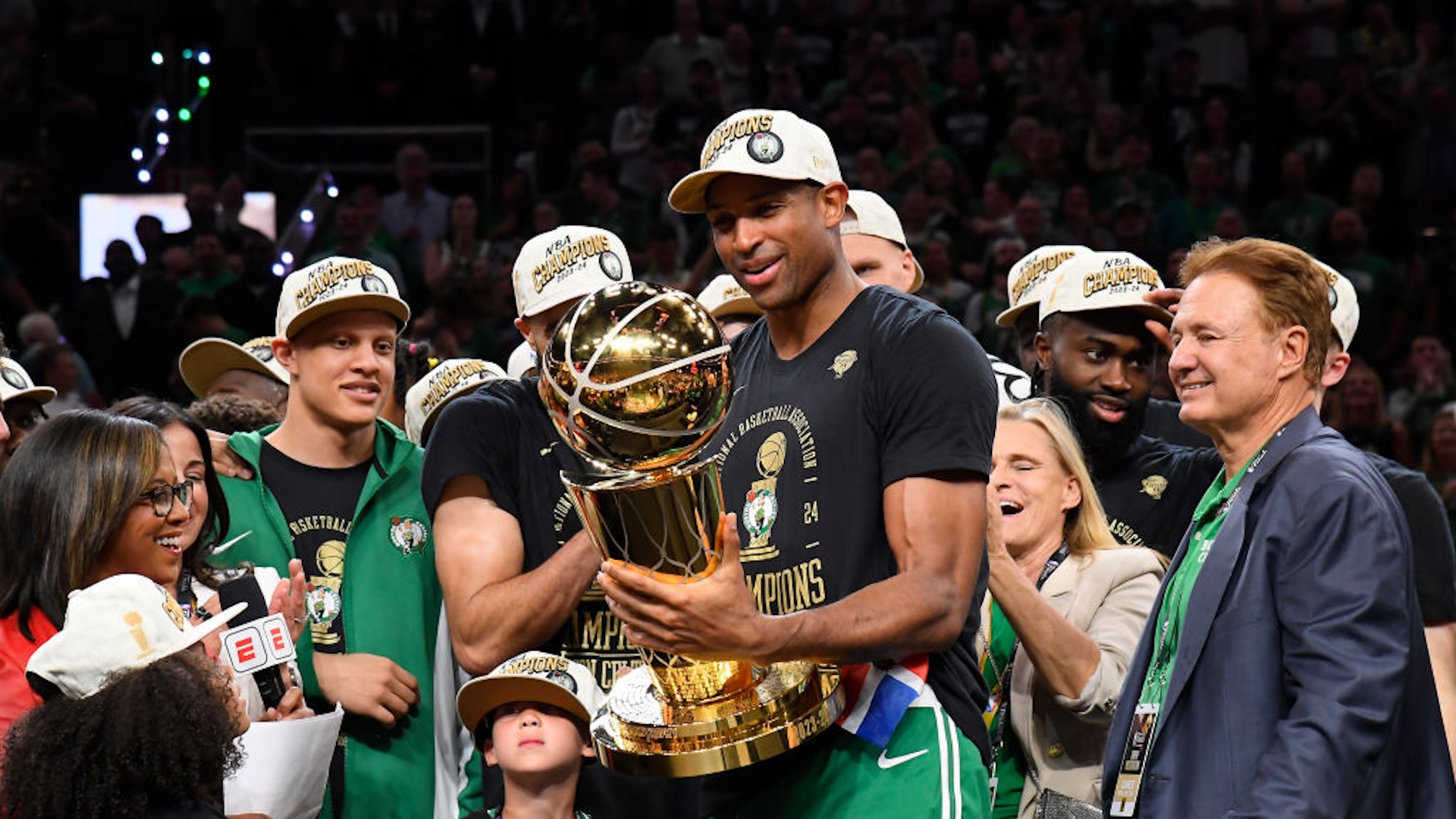If it hadn't been made clear during the first four games of the NBA Finals, or in their previous 14 playoff games, it should be clear now: The Boston Celtics are the best team in the NBA by a considerable margin. Say what you want about injury luck or favorable matchups, but only a great team can earn the Larry O'Brien by going 16-3 in the postseason and winning the clinching game by 18 points.
The deciding game unfolded the same way countless Celtics wins have. Boston guarded straight-up, using its ultra-switchable lineups and its ability to defend 1-on-1 in space to choke Dallas' supply of layups, lobs, and kick-out threes. On offense, they played five-out and used spacing, iso-ball, and a whirring drive-and-kick game to manufacture as many three-point attempts as possible. The box score from this game—Celtics win 106-88, shoot 13-of-39 from three-point range—could have been the box score from any one of Boston's 64 regular-season wins. That it was produced so easily in the last game of the season against ostensibly the best the West had to offer speaks to how hard it is to stop this team from doing exactly what it wants.
How the Celtics got good enough to win the title as casually as you or I might take a stroll through the park is a story that begins with roster construction. If playoff basketball is all about finding an opponent's weakness—a starting swingman who can't shoot, a big who can't switch, a backup guard who can't dribble, etc.—and mercilessly attacking it until something breaks, then building a team is all about trying to eliminate as many of those weaknesses as possible. This season, for the first time in a long time, the Celtics felt like a team without a weakness. Opponents who went looking for irregularities in Boston's structure were only met by a gleaming, seamless edifice.
Celtics fans can partly thank the front office's patience and perseverance for this team's invincibility. Jayson Tatum and Jaylen Brown have been teammates for seven seasons now, and together they lost in the finals once, the conference finals three times, the conference semifinals once, and the first round once. That amount of losing, in every stage of the postseason, is enough to stir up all sorts of questions about whether a team has gone as far as its two stars can take it. But the Celtics understood that what they had in Tatum and Brown, a pair of two-way wings who can defend any position and score from anywhere on the floor, was a double helping of the NBA's most precious resource. And so Brown, in the wake of the Celtics' humiliating defeat to the eight-seed Heat in last year's conference finals, got his max extension and the Celtics committed to building a championship team around their two still-young stars.
The Celtics' patience with Brown and Tatum did not give way to stagnation. This team has been built and rebuilt around them so many times that it's hard to really find any relationship between the version that just won the title and the one that went to the conference finals in 2018. Remember Gordon Hayward? Kyrie Irving? Ime Udoka? Marcus Smart? Remember when this team went 36-36 in 2020–21 and Kemba Walker was taking 15 shots a game? The Celtics' commitment to Brown and Tatum was matched only by their willingness to tear down the team around them, and it is that effective marriage of patience and daring that built this team, the one that finally got over the hump.
Building a championship roster often comes down to simply taking advantage of the opportunities presented to you. This past summer, thanks to the Bucks deciding that they needed to go all-in for Damian Lillard, the Celtics found themselves with the unexpected opportunity to acquire Jrue Holiday. And then the Wizards decided that it was time to dump Kristaps Porzingis. Suddenly a team that had been heavily relying on Marcus Smart and Robert Williams III, two players who presented plenty of tender spots for opponents to press on, had sealed up the last of its vulnerabilities.
With Porzingis and Holiday in the lineup, the Celtics started winning easy. The simplicity of their formula, and its effectiveness, was at times so overwhelming that it could make you wonder why every team doesn't just play like this. The answer is that you can't play defense like the Celtics unless you have an entire rotation's worth of fierce, switchable defenders, from the guards to the bigs. Teams aren't supposed to have that. Nor are they meant to have enough shooters and drivers up and down the rotation that they can play five-out for 48 minutes without surrendering any advantages to the opponent. Those resources are supposed to be hard to come by. The Celtics got Derrick White for Romeo Langford, Josh Richardson, and two draft picks.
The story of this championship isn't just one of roster construction, though. A roster can be shiny and invincible on the day it's built, but it is always down to the players on the court to define the true nature of their team. For the Celtics, those revelations came from Brown fighting over every screen that came his way and hounding Luka Doncic into misery, Tatum seamlessly toggling between scorer and playmaker, White becoming just as fearless of a shooter as he is a defender, and Porzingis gutting out minutes on one leg. They came from Al Horford, 38 years old and in pursuit of the title that had eluded him for 17 seasons, getting switched onto Doncic and Kyrie Irving and letting them know there would be no easy buckets. He moved his feet, he stayed in front, and the Celtics won easy.






